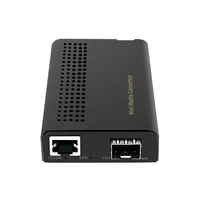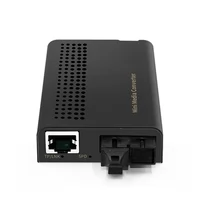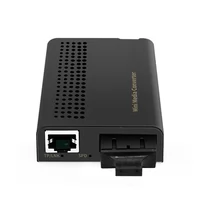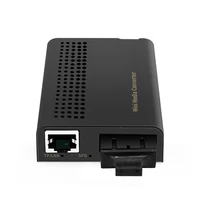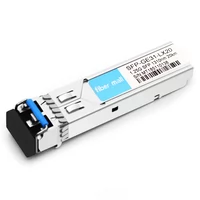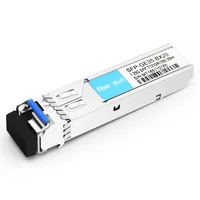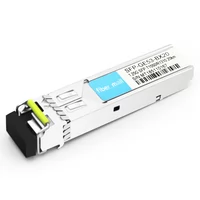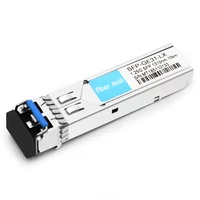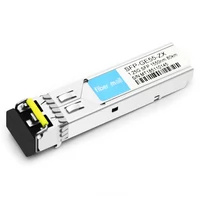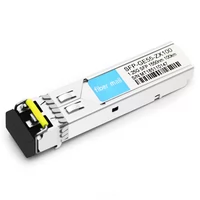When we transmit over long distances, we usually use optical fiber for transmission. Because the transmission distance of optical fiber is very long, generally speaking, the transmission distance of single-mode optical fiber is more than 10 kilometers, while the transmission distance of multi-mode optical fiber can reach up to 2 kilometers. In fiber optic networks, we often use fiber media converters. So, how to connect the fiber media converter? Let’s find out.
Table of Contents
ToggleThe Role of Fiber Media Converters
① Fiber media converters can extend the transmission distance of Ethernet and expand the coverage radius of Ethernet.
② Fiber media converters can convert between 10M, 100M or 1000M Ethernet electrical interface and optical interface.
③ Using fiber media converters to construct a network can save network investment.
④ Fiber media converters make the interconnection among servers, repeaters, hubs, terminals and terminals faster.
⑤ Fiber media converters have a microprocessor and a diagnostic interface, which can provide various data link performance information.
Is there a fiber media converter dedicated to transmitting or receiving?
When using fiber media converters, some people will encounter such questions:
- Do fiber media converters have to be used in pairs?
- Is there one dedicated to receiving and one to sending, or just two random fiber media converters can be used as a pair?
- If they must be used in pairs, do they have to be of the same brand and model? Or can any brand be used in combination?
Many friends may have these questions while using the converter, so how does it work?
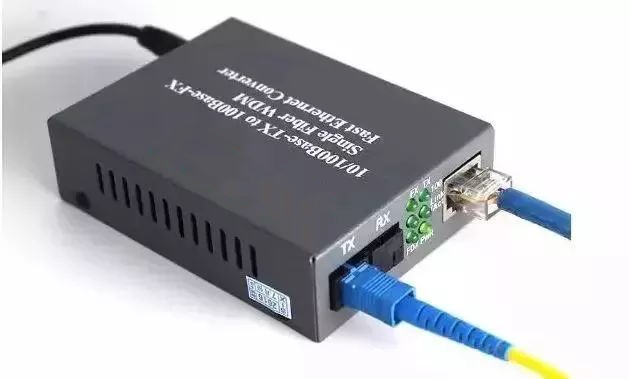
A fiber media converter
Fiber media converters are generally used in pairs as photoelectric conversion equipment, but it is also normal to use fiber media converters with fiber optic switches, or with SFP transceivers in pairs. In principle, as long as they have the same optical transmission wavelength and the same signal packaging format and support a certain protocol, they can realize optical fiber communication.
Generally, single-mode dual-fiber (two fibers are required for normal communication) media converters do not distinguish between the transmitting end and the receiving end, as long as they appear in pairs, they can be used.
Only single-fiber media converters (one fiber is required for normal communication) will have a transmitter and a receiver.
Whether it is a dual-fiber or a single-fiber media converter, it must be used in pairs, and different brands of fiber media converters are compatible and interoperable. But their rate, wavelength, and mode need to be the same.
That is to say, the fiber media converters with different speeds (say 100M and 1 Gigabit) and different wavelength (say 1310nm and 1300nm) cannot communicate with each other. Besides, a single-fiber media converter and a dual-fiber media converter of the same brand are not interoperable.
So, what is single-fiber media converter and what is dual-fiber media converter? What’s the difference between them?
What are single-fiber media converters and dual-fiber media converters?
Single-fiber media converters use only one core, and both ends are connected to this core. The converters at both ends use different optical wavelengths, so they can transmit light signals in one core.
Dual-fiber media converters use two cores, one for sending and the other for receiving. The two ends of one optical fiber must be inserted into TX port (transmitting port) and RX port (receiving port) separately.
Single-fiber media converter
single-fiber media converter needs to realize both the transmitting function and the receiving function. It uses the wavelength division multiplexing technology to transmit two beams of optical signals with different wavelengths in one optical fiber to realize the transmission and reception.
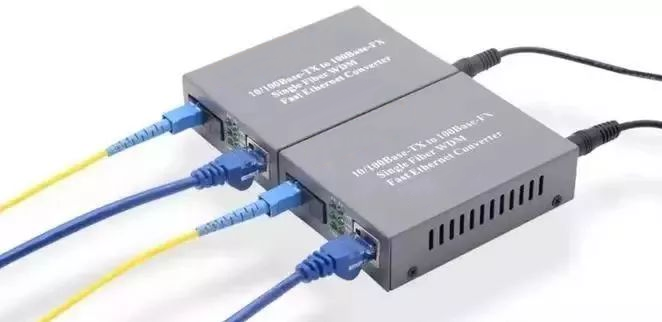
A single-fiber media converter
Therefore, the single-mode single-fiber media converter transmits lights through a single-core optical fiber, so the transmitted and received light are transferred through a single optical fiber core at the same time. In this case, two wavelengths of light must be used to achieve normal communication.
So, the optical module of the single-mode single-fiber media converter has two emission wavelengths, generally 1310nm/1550nm, so that there will be a difference between the two interconnected ends of a pair of fiber media converters: the converter at one end emits at 1310nm and receives at 1550nm, the other end is transmitting at 1550nm and receiving at 1310nm, so different letters will be used for the users to distinguish both ends. There are A terminal (1310nm/1550nm) and B terminal (1550nm/1310nm). Users must use AB pairing, and AA or BB pairing doesn’t work. Only single-fiber media converter will use AB end.
Dual-fiber media converter
Dual-fiber media converter has a TX port (transmitting port) and an RX port (receiving port). Both ports transmit the same wavelength of 1310nm and receive at 1310nm, so two parallel optical fibers are used for cross-connection when wiring.
How to distinguish single-fiber media converter from dual-fiber media converter?
There are currently two ways to distinguish the two media converters.
① When the fiber media converter is embedded with an optical module, it is divided into single-fiber media converter and dual-fiber media converter according to the number of fiber cores of the connected optical fiber jumper. The fiber jumper connected to single-fiber media converter(on the right) has one fiber core, which is responsible for both transmitting and receiving data; the fiber jumper connected to dual-fiber media converter(on the left) has two cores, one of which is responsible for transmitting data and the other is for receiving data.
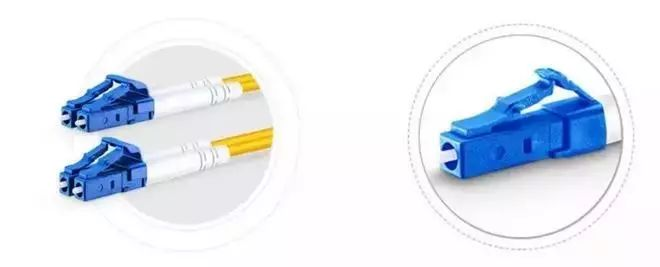
Dual-fiber media converter vs. single-fiber media converter (1)
② When the fiber media converter does not have a built-in optical module, we can distinguish whether it is single-fiber media converter or dual-fiber media converter according to the inserted optical module. When a single-fiber bidirectional optical module is inserted into the fiber media converter, that is, when the interface is simplex type, the fiber media converter is a single-fiber media converter (on the right); When a dual-fiber bidirectional optical module is inserted into it, that is, when the interface is of duplex type, it is a dual-fiber media converter (on the left).
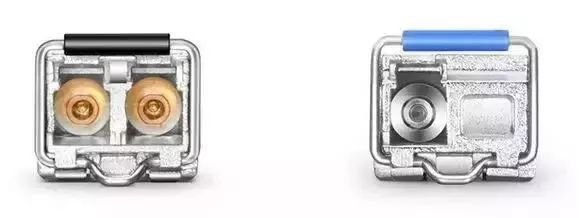
Dual-fiber media converter vs. single-fiber media converter (2)
Indicators and connection of fiber media converters
The indicator light of the fiber media converter
The schematic diagram shows clearly how the indicators work.
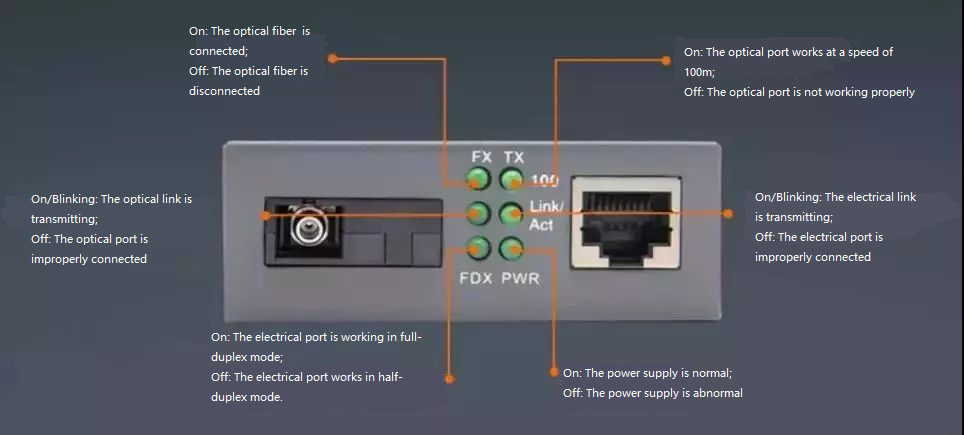
Schematic diagram of the indicator light of the fiber media converter
Fiber media converter connection
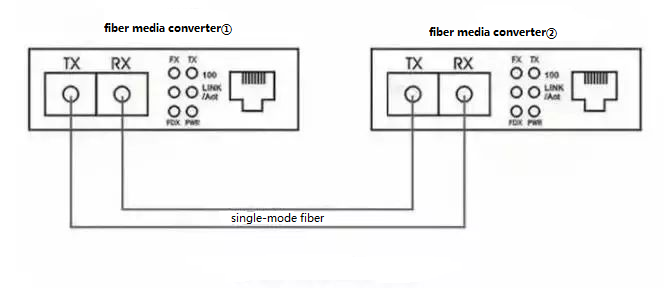
Connection diagram of fiber media converter
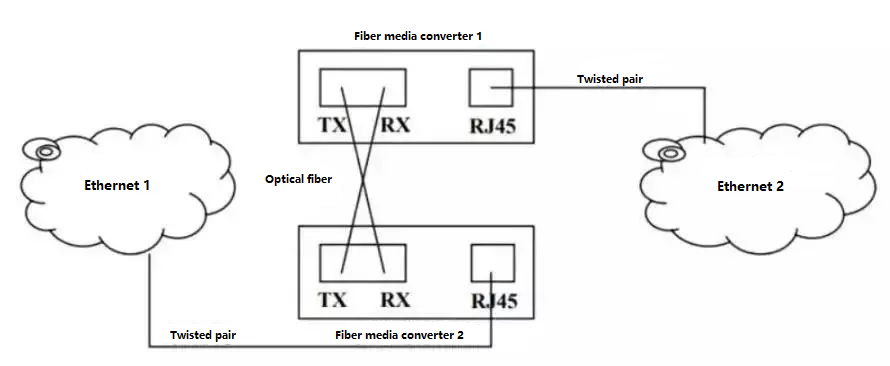
Schematic diagram of fiber media converter connection

Peer-to-peer application

Center to remote multipoint applications
Related Products:
-
 Mini 1x 10/100/1000Base-T RJ45 to 1x 1000Base-X SFP Gigabit Ethernet Media Converter
$20.00
Mini 1x 10/100/1000Base-T RJ45 to 1x 1000Base-X SFP Gigabit Ethernet Media Converter
$20.00
-
 Mini 1x 10/100Base-T RJ45 to 1x 100Base-X SC TX1310nm/RX1550nm 20km SM Single Fiber Fast Ethernet Media Converter
$27.00
Mini 1x 10/100Base-T RJ45 to 1x 100Base-X SC TX1310nm/RX1550nm 20km SM Single Fiber Fast Ethernet Media Converter
$27.00
-
 Mini 1x 10/100Base-T RJ45 to 1x 100Base-X SC 1310nm 2km MM Dual Fiber Fast Ethernet Media Converter
$27.00
Mini 1x 10/100Base-T RJ45 to 1x 100Base-X SC 1310nm 2km MM Dual Fiber Fast Ethernet Media Converter
$27.00
-
 Mini 1x 10/100/1000Base-T RJ45 to 1x 1000Base-X SC 850nm 500m MM Dual Fiber Gigabit Ethernet Media Converter
$27.00
Mini 1x 10/100/1000Base-T RJ45 to 1x 1000Base-X SC 850nm 500m MM Dual Fiber Gigabit Ethernet Media Converter
$27.00
-
 SFP-GE31-LX20 1000Base LX SFP 1310nm 20km LC SMF DDM Transceiver Module
$4.50
SFP-GE31-LX20 1000Base LX SFP 1310nm 20km LC SMF DDM Transceiver Module
$4.50
-
 SFP-GE35-BX20 1000Base BX BIDI SFP TX1310nm/RX1550nm 20km LC SMF DDM Transceiver Module
$6.00
SFP-GE35-BX20 1000Base BX BIDI SFP TX1310nm/RX1550nm 20km LC SMF DDM Transceiver Module
$6.00
-
 SFP-GE53-BX20 1000Base BX BIDI SFP TX1550nm/RX1310nm 20km LC SMF DDM Transceiver Module
$9.00
SFP-GE53-BX20 1000Base BX BIDI SFP TX1550nm/RX1310nm 20km LC SMF DDM Transceiver Module
$9.00
-
 SFP-GE31-LX 1000Base LX SFP 1310nm 10km LC SMF DDM Transceiver Module
$4.50
SFP-GE31-LX 1000Base LX SFP 1310nm 10km LC SMF DDM Transceiver Module
$4.50
-
 SFP-GE55-ZX 1000Base SFP ZX 1550nm 80km LC SMF DDM Transceiver Module
$18.00
SFP-GE55-ZX 1000Base SFP ZX 1550nm 80km LC SMF DDM Transceiver Module
$18.00
-
 SFP-GE55-ZX100 1000Base SFP ZX100 1550nm 100km LC SMF DDM Transceiver Module
$35.00
SFP-GE55-ZX100 1000Base SFP ZX100 1550nm 100km LC SMF DDM Transceiver Module
$35.00

